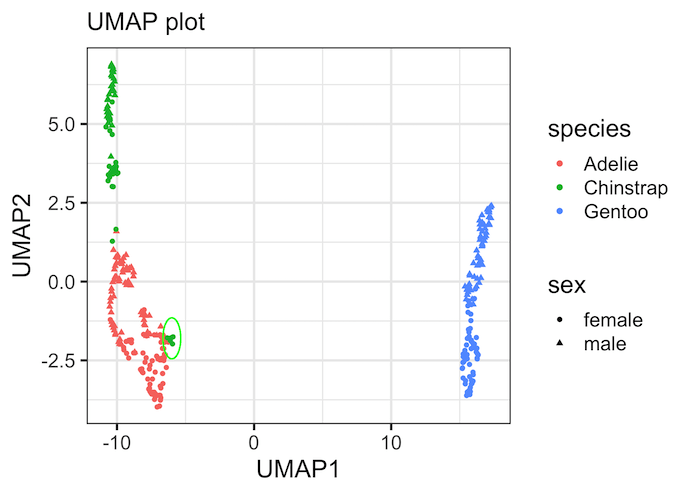UMAP, short for “Uniform Manifold Approximation and Projection” is a one of the useful dimensionality reduction techniques like tSNE and PCA. UMAP is non-linear dimension reduction technique and often used for visualizing high-dimensional datasets. In this tutorial, we will learn how to perform dimensionality reduction using UMAP in R and learn make a UMAP plot… Continue reading How to make UMAP plot in R
Category: R
How to Remove Space between Legend at Bottom and x-axis in ggplot2
In ggplot2, we can adjust the position of legend easily. By default, ggplot2 places the legend on the right side of a plot. Using theme() function, we can move the legend to the bottom of or top of the plot. Sometime, you might like to customize the space between legend at bottom and x-axis. In… Continue reading How to Remove Space between Legend at Bottom and x-axis in ggplot2
How to add percentage label on bars in barplot with ggplot2
Adding percentage labels or count labels to bars in a barplot can help read the barplot quickly. In this tutorial, we will learn how to add labels with percentage symbol on bars in a barplot made with ggplot2 in R. Loading Packages and Dataset Let us get started by loading packages needed and a dataset… Continue reading How to add percentage label on bars in barplot with ggplot2
Grouped Boxplots with reproducible jittered data points
In this post we will learn how to make a grouped boxplots with reproducible jittered points. We can make a grouped boxplot with jittered points using position_jitterdodge() function as position argument to geom_point(). Note that using the handy wrapper function geom_jitter() instead of geom_point() with position_jitterdodge() will not give right plot with jittered data. If… Continue reading Grouped Boxplots with reproducible jittered data points
How to make random jittered points reproducible
In this post we will learn how to make a random jitter plots made with ggplot2 reproducible. We have multiple posts on the importance of showing the actual data points while making boxplots/violinplots. One of the ways to avoid overplotting, is to add random jitters on the x-axis to the data points, so they all… Continue reading How to make random jittered points reproducible
